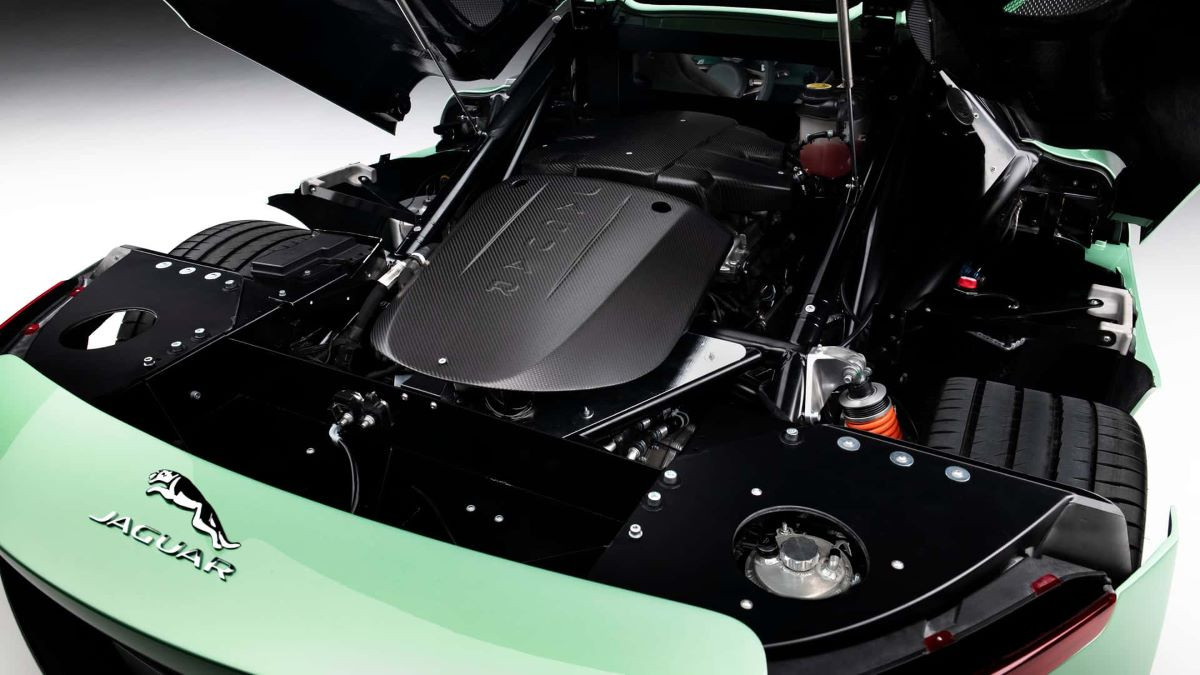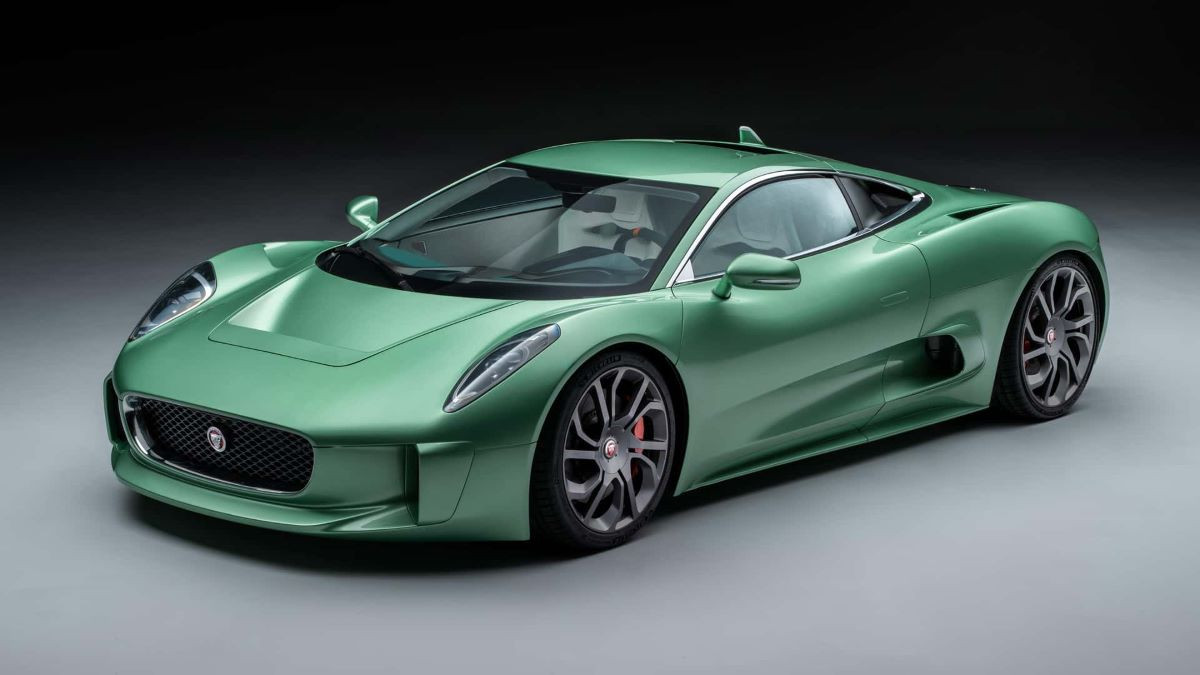The spectacular Jaguar C-X75 concept car was initially created only as another demonstrator of future automotive technologies: the first built sample had four Yasa traction electric motors and a gas-turbine generator. However, after the furor at the Paris Motor Show, Jaguar decided to release a batch of 250 production cars. This plan failed to materialize, and in fact only eleven more cars with simplified technology saw the light of day.
![]()
Five prototypes for testing had two electric motors and a 1.6 petrol turbo four as a generator. Another six cars were built by the Jaguar SVO division together with Williams Advanced Engineering specifically for the filming of the James Bond franchise movie Spectre. These supercars were equipped with a serial 5.0 V8 supercharged engine (499 hp), automatic transmission and rear-wheel drive with a limited-slip differential. In 2019, one of these actor cars with serial number 001 was sold at auction by RM Sotheby’s.

By a happy coincidence, at about the same time, designer Ian Callam, who worked on the appearance of the C-X75, founded his own studio to implement small-scale and one-off projects. It was he who was approached by the lucky buyer of another movie example, number 007, to convert it into a road car. The project was completed earlier this year, although it did not become public knowledge. It is only known that the owner insisted on preserving the original condition of the car as much as possible, “as in the film.”

But the second Jaguar C-X75, which the Callum studio worked on, on the contrary, has been revealed to the world. This is the very same auction copy numbered 001, and the opposite role was chosen for it: the coupe was brought to the state in which designer Ian Callum originally wanted to see it. The bright orange body color was replaced with an elegant Willow green: more than 1,000 hours were spent on painting and introducing active aerodynamic elements (with an air brake). The front suspension is supplemented with hydraulics, which lifts the nose of the car to pass road bumps. Improved ride comfort is also promised.

A seven-speed “robot” with two clutches appeared, but the supercharged V8 and rear-wheel drive were retained. But the interior was radically redesigned, because the movie model was not shy of bare metal and uncovered switches on the virtually absent central console. But now the reborn C-X75 can boast an original front panel with massive instrument dials and three “multimedia” flares with touch screens on the ends. Comfort elements include wireless charging, Apple CarPlay support and a rear-view camera. In addition, there is an engine start button and other familiar controls on the overhead console.

Finally, the car has been brought to the requirements necessary for admission to public roads and is certified. However, there is no talk of further replication of the Jaguar C-X75 coupe. Jaguar itself has already turned to the path of luxury electrification, and has not remembered the supercar project for a long time.

